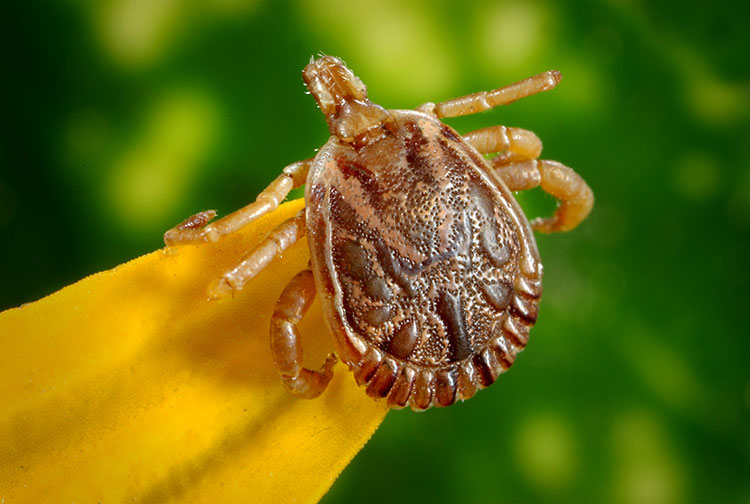
In 2018, there have been 5 reported cases of Lyme disease in Santa Cruz County so far. The annual average is eleven. Results from Santa Cruz County’s 2017/2018 tick-borne disease surveillance program indicate that approximately 2% of adult Western black-legged ticks tested are infected with the bacteria that can cause Lyme disease. This is consistent with previous years.
“Winter is a time of high adult tick activity in our coastal hills, and residents should be aware when spending time outdoors”, SCCMVC Manager Paul Binding said.
- Wear long pants and long-sleeved shirts.
- Walk in the center of trails and avoid logs, tree trunks, trail margins, brush and tall grass.
- Shower and thoroughly check your entire body for ticks after time outdoors. Parent’s should examine their children, especially on the scalp and hairline.
- Keep your pets on trails as well, and check and remove ticks after time outdoors.
- Use EPA-registered repellent for use against ticks; always follow label directions. Products with a concentration of 20% DEET or higher, and/or treating clothes and shoes with permethrin before entering tick habitat are recommended.
- Launder clothes (and dry on high heat) soon after activity in tick habitat. Removing a tick within 24 hours after it attaches can prevent transmission of Lyme diseases and other tickborne diseases.
To reduce the possibility of infection, remove attached ticks as soon as possible. Gently and firmly grasp the tick close to the head and pull it straight out, preferably with fine-pointed tweezers. Save the tick for identification. Ticks should be kept alive by placing the tick into a sealable bag or container with a moist cotton ball in a refrigerator or cooler. The person removing the tick should wash their hands before and after removal and apply antiseptic to the bite area. Insecticides, Vaseline, lighted matches or gasoline should not be used to remove ticks because these techniques are ineffective or unsafe.
Consult your healthcare provider if you have been bitten by a tick or were in an area where ticks occur and are concerned about Lyme disease. Painful redness that occurs less than 24 hours after a tick bite and does not expand is likely a local allergic reaction to the tick bite. Early Lyme disease can include flu-like symptoms and often an expanding, painless rash. Lyme disease is treated with antibiotics and most patients recover without complications, particularly when the disease is diagnosed early. If left untreated, Lyme disease can progress to arthritis and in some cases serious nervous system problems.
“Bulls eye” rash of a patient infected with Lyme disease. Note that this rash does not always occur when someone is infected—it is important to look out for flu-like symptoms and check yourself for ticks.
Santa Cruz County Mosquito & Vector Control can help with tick identification M-F, 8 a.m.-3 p.m. Visit us at 640 Capitola Rd., Santa Cruz.
•••
For more information, call (831) 454-2590 or email PestHelp@agdept.com. Residents can also visit SCCMVC at www.agdept.com under “Mosquito Abatement/Vector Control.”
Also visit: https://www.cdph.ca.gov for more information on ticks and tick-borne diseases.